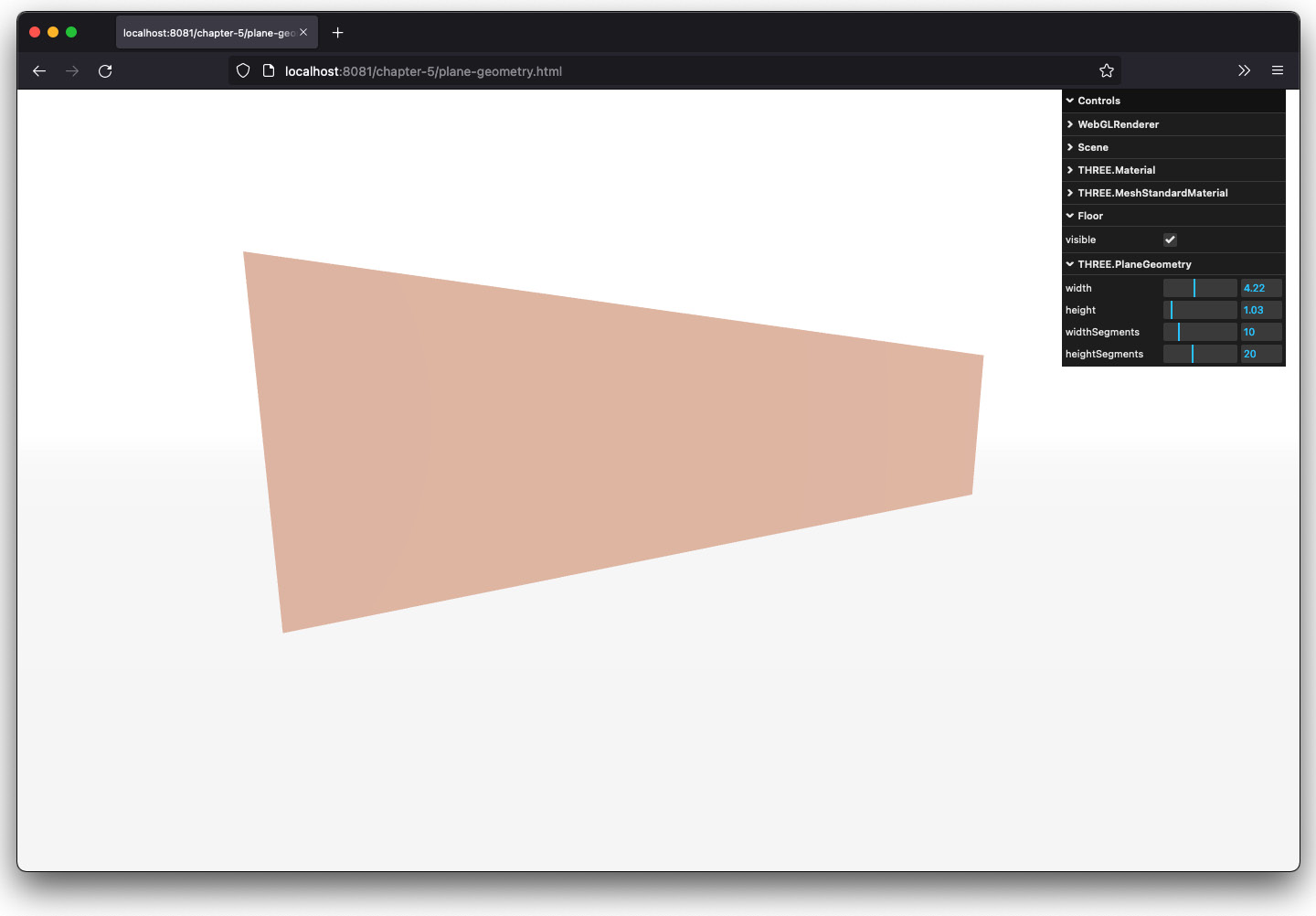2D geometries
2D objects look like flat objects and, as the name implies, only have two dimensions. In this section, we’ll first look at the 2D geometries: THREE.CircleGeometry, THREE.RingGeometry, THREE.PlaneGeometry, and THREE.ShapeGeometry.
THREE.PlaneGeometry
A THREE.PlaneGeometry object can be used to create a very simple 2D rectangle. For an example of this geometry, look at the plane-geometry.html example in the sources for this chapter. A rectangle that was created using THREE.PlaneGeometry is shown in the following screenshot:

Figure 5.1 – Plane geometry
In the examples for this chapter, we’ve added a control GUI that you can use to control the properties of the geometry (in this case, width, height, widthSegments, and heightSegments), and also change the material (and its properties), disable shadows, and hide the ground plane. For instance, if you want to see the individual faces of this shape, you can easily show...































































